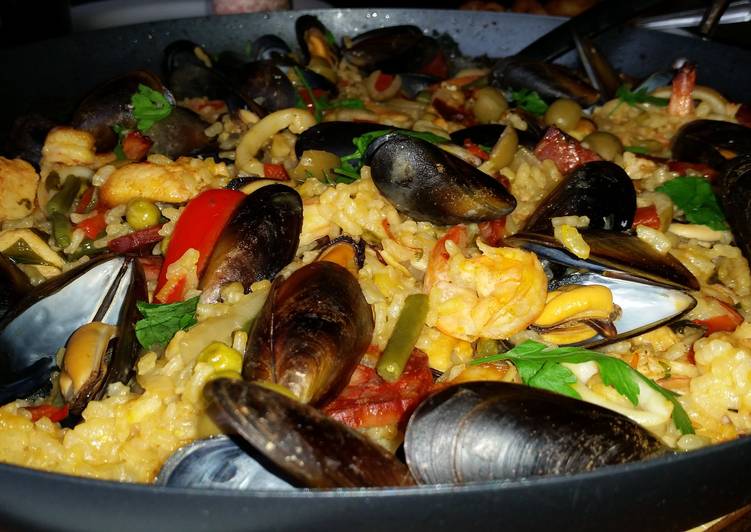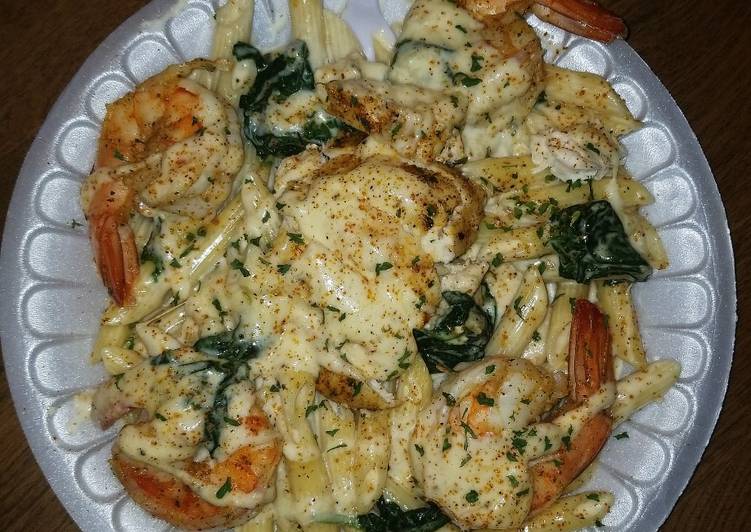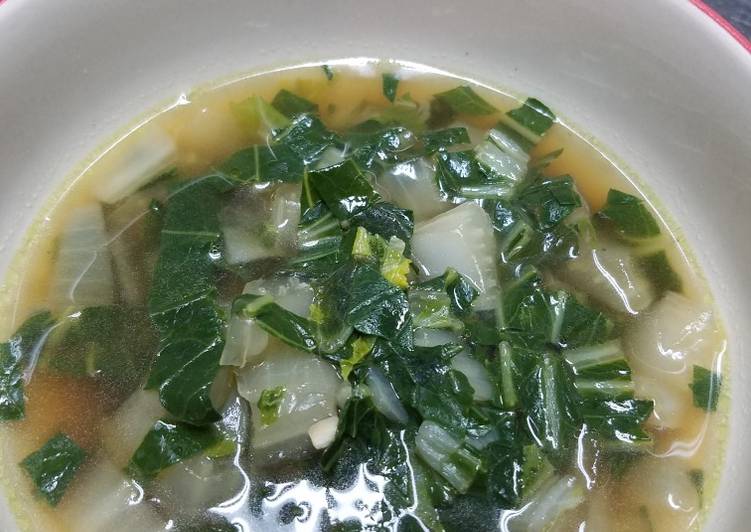
Hello everybody, it’s Louise, welcome to my recipe site. Today, I’m gonna show you how to prepare a distinctive dish, paella. It is one of my favorites food recipes. This time, I am going to make it a bit unique. This is gonna smell and look delicious.
Paella is a typical Spanish recipe and is traditionally cooked in a "paellera" - a round flat pan with two In many Spanish villages, especially in coastal areas, they use a giant paellera to cook a paella on. Nourishing, vibrant, and served without pretension, paella has held a place of honor and practicality in Spanish homes for centuries. This seafood paella from Valencia in Spain, called paella de marisco, is full of fresh seafood - squid, mussels, crayfish, prawns and clams.
Paella is one of the most popular of recent trending meals in the world. It is simple, it’s quick, it tastes yummy. It is enjoyed by millions every day. Paella is something which I have loved my whole life. They are nice and they look wonderful.
To get started with this particular recipe, we must first prepare a few components. You can have paella using 19 ingredients and 5 steps. Here is how you can achieve that.
Ingredients
The ingredients needed to make Paella:
- Make ready 100 grams fresh mussels
- Take 70 grams peas
- Prepare 70 grams green beans, cut into short lengths
- Take 5 tbsp olive oil
- Prepare 250 grams boneless chicken breast, cut into chunks
- Get 150 grams king prawns, peeled and deveined
- Prepare 1 large spanish onion
- Prepare 4 large cloves of garlic
- Take 2 medium tomatoes, chopped
- Prepare 1 handful of fresh parsley
- Prepare 800 ml chicken stock
- Get 1 pinch of saffron threads
- Prepare 350 grams paella rice
- Take 200 grams chorizo, sliced
- Get 10 green stuffed olives, sliced
- Get 1 smoked paprika
- Make ready 1 salt and pepper to taste
- Prepare 1 red pepper, sliced
- Take 80 grams squid, cut into rings
Paella mixta: mixed meat and seafood. Fideuàis: a Paella that uses pasta instead of rice. Many paellas feature various meats and seafoods, but vegetarian paella can be a revelation. This version is fully loaded with a rainbow of seasonal vegetables cooked into a saffron and.
Instructions
Instructions to make Paella:
- Soak the saffron in 3 tablespoons of hot water. Then heat the wine in a pan and add the mussels. Cover with a lid and cook until open.
- Heat half the oil in a paella pan or large frying pan. Season the chicken with salt and paprika, and fry until starting to brown. Add the king prawns and fry until pink.
- Remove from the pan then add the onions and garlic and fry until the onions soften and brown. Then add the red pepper, tomatoes and parsley and cook for 3 mins.
- Stir in the stock, saffron liquid and the liquid the mussels were cooked in. Season with salt and pepper and bring to the boil. Stir in the rice, chicken, prawns, squid, chorizo, beans and peas.
- If using an oven, preheat to 180°C, then add the paella. Cook for 15 minutes. If using the hob, cook over a medium hear for about 10 mins, stirring occadionally. Add the olives and mussels and cook for another 10 minutes. When done, serve straight from the pan and enjoy!
Paella is a traditional dish of Spain. Its home is Valencia, but variations exist in the different Spanish Traditionally, the paella is cooked out of doors, over a wood fire. To make a paella, first sauté meats. This paella recipe is easy and delicious. Find more dinner inspiration at BBC Good Food.
So that’s going to wrap it up for this special food paella recipe. Thanks so much for your time. I am confident that you can make this at home. There’s gonna be more interesting food in home recipes coming up. Don’t forget to bookmark this page in your browser, and share it to your family, colleague and friends. Thank you for reading. Go on get cooking!
Print this page

